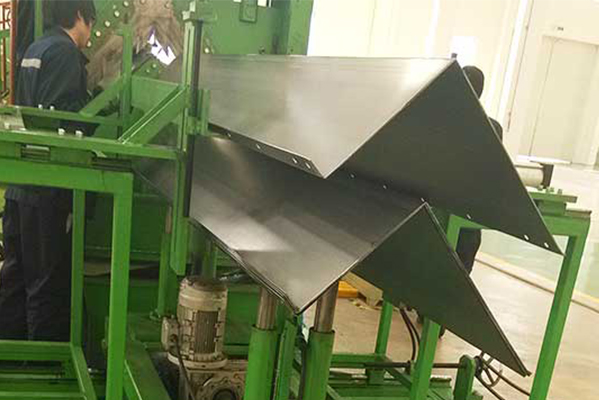Navigation Menu
Contact Us
- Email:
- info@wxavatar.com
- Address:
- Yurong Village, Yuqi Street, Huishan District, Wuxi, China.
Release Date:Jul 26, 2025 Visit:0 Source:Roll Forming Machine Factory
The manufacturing sector is witnessing increased adoption of automatic steel silo roll forming lines as companies seek to improve production efficiency and product quality. These advanced systems offer numerous advantages that align with modern industrial requirements. This article examines the key reasons behind this growing investment trend.

Enhanced Production Efficiency
Automatic steel silo roll forming lines significantly reduce production time compared to traditional manufacturing methods. The continuous operation capability allows for uninterrupted silo panel formation, minimizing downtime between production cycles. These systems can maintain consistent output for extended periods, enabling manufacturers to meet larger order volumes without compromising on delivery timelines.
Improved Product Consistency
The precision engineering of automatic roll forming lines ensures uniform product dimensions throughout production runs. Computer-controlled processes eliminate variations that often occur with manual operations, resulting in silo components that fit together perfectly during assembly. This consistency reduces material waste from manufacturing errors and decreases the need for post-production adjustments.
Labor Cost Optimization
By automating much of the production process, these systems reduce reliance on skilled labor for repetitive tasks. Operators can oversee multiple machines simultaneously, allowing manufacturers to allocate human resources to more value-added activities. The reduced labor requirements contribute to lower per-unit production costs over time.
Material Utilization Advantages
Modern roll forming lines are designed to maximize material usage, minimizing scrap generation during the production process. The precision cutting and forming capabilities ensure optimal use of steel coils, which can lead to significant material cost savings, especially for large-scale silo production projects.
Flexibility in Production
Contemporary automatic roll forming systems offer quick changeover capabilities between different silo panel profiles. This adaptability allows manufacturers to respond efficiently to diverse customer requirements without extensive downtime for equipment reconfiguration. The ability to handle various steel grades and thicknesses further enhances production versatility.
Long-Term Equipment Reliability
Manufacturers recognize the durable construction of automatic roll forming lines, which are built to withstand continuous industrial use. The robust design translates to extended service life with proper maintenance, providing a solid return on investment over time. Many systems incorporate features that simplify routine maintenance procedures.
Technological Integration
Modern roll forming lines often include advanced monitoring systems that track production metrics in real time. This data collection capability enables manufacturers to analyze performance trends and identify potential improvements in their operations. Some systems offer remote diagnostics, allowing for quicker troubleshooting and reduced downtime.
Market Demand Factors
The growing need for efficient grain storage solutions and industrial containment systems has increased demand for steel silos. Automatic roll forming lines enable manufacturers to scale production to meet this rising market need while maintaining competitive pricing structures. The ability to produce high-quality silos consistently positions manufacturers favorably in competitive markets.

Conclusion
The investment in automatic steel silo roll forming lines reflects manufacturers' strategic response to industry demands for efficient, consistent, and cost-effective production. These systems address multiple operational challenges while providing measurable improvements in output quality and production capacity. As technology continues to advance, further adoption of automated roll forming solutions in the steel silo manufacturing sector appears likely.